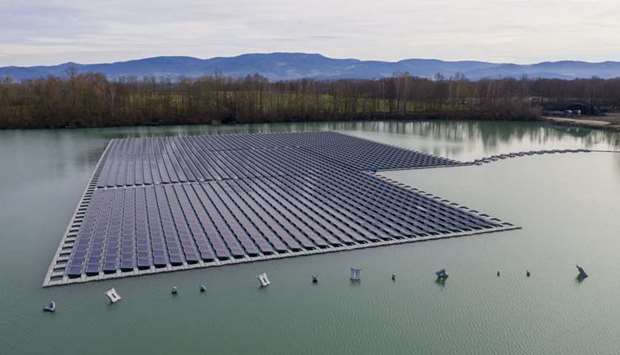Europeans need to urgently increase the solar power that their economies generate or face a reckoning with climate change they could regret.
Those are the stark choices outlined by top European Union scientists whose advice will be published by Elsevier BV.
They see massive new solar investments not only for the bloc to meet its 2030 climate goals, but also to spur employment and development of automated-manufacturing technologies. Their proposal got a potential lift last week when the EU made climate-neutrality a key pillar of a historic plan to spur economic growth in the wake of the coronavirus pandemic.
“Accelerating the annual photovoltaic installation rate compared to the current value is a no-regret option,” Joint Research Centre scientists led by Arnulf Jaeger-Waldau wrote for July’s issue of the journal Renewable and Sustainable Energy Reviews. They said solar power “represents a win-win option” for countries that need to cut greenhouse gas emissions while kick-starting sustainable economic activity.
By 2030, Europeans need to boost installed solar-power capacity to at least 455 gigawatts from about 133 gigawatts today, the researchers said. Solar manufacturers have been in a fight in the last decade that’s pushed panel costs down more than three-quarters and resulted in wild up-and-down swings in demand. Most of today’s biggest photovoltaic makers are located in China.
To turn those fluctuations into steady growth, the EU scientists want to “bring photovoltaic factories back to Europe” by linking the renewable-energy transition with cutting-edge manufacturing. Automation and industrial robots could alleviate the bloc’s high labour costs while stimulating orders for European machine makers. That could help the number of solar-energy jobs more than double from roughly 133,000 today.
Depending on the speed European drivers adopt electric vehicles and the pace at which utilities shut down coal plants, solar capacity may need to grow as much as five-fold to meet the EU’s stringent emission goals. New climate targets under discussion in Brussels may raise greenhouse gas cuts to 55% by 2030 compared to 1990 levels, according to the study. Billions of euros could flow to install panels on rooftops and solar farms in abandoned mining regions.
European installations should grow 15% annually to 2030 compared with average annual increases of some 11% in the last decade, according to BloombergNEF data. But risks of not picking up pace under the European Green Deal are high, according to the scientists.
“Delays now can make future actions more costly and increase the probability to reach the climate tipping point, after which limiting the temperature increase to below 1.5 Celsius would no longer be possible in this century,” wrote the researchers, noting the temperature threshold the world needs to stay under to mitigate runaway global warming.

A floating solar panel farm in Germany. Scientists see massive new solar investments in Europe not only to meet its 2030 climate goals, but also to spur employment and development of automated-manufacturing technologies. Their proposal got a potential lift last week when the EU made climate-neutrality a key pillar of a historic plan to spur economic growth in the wake of the coronavirus pandemic.


